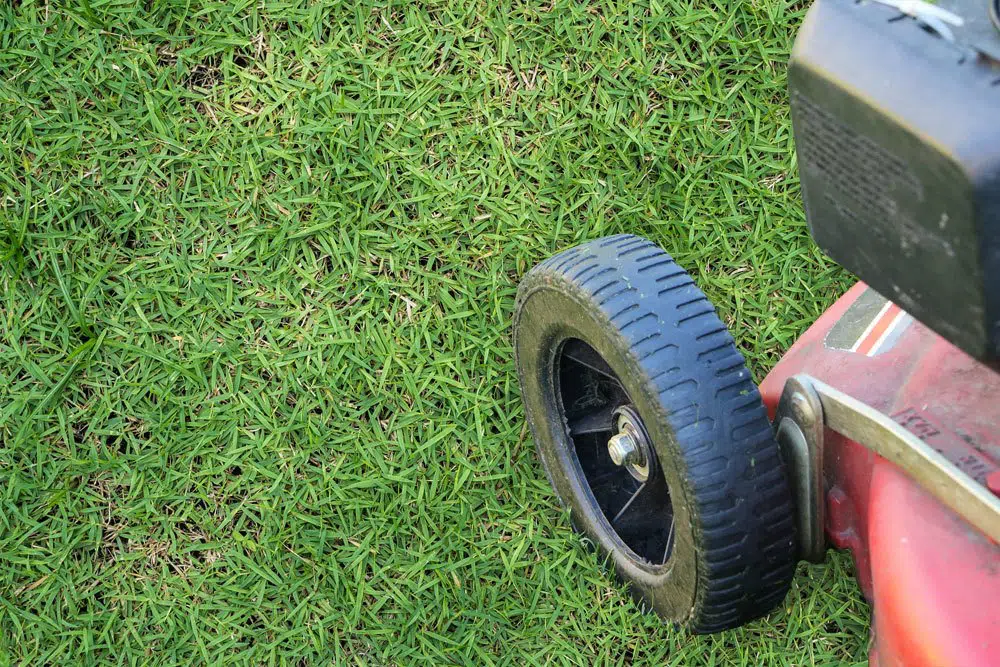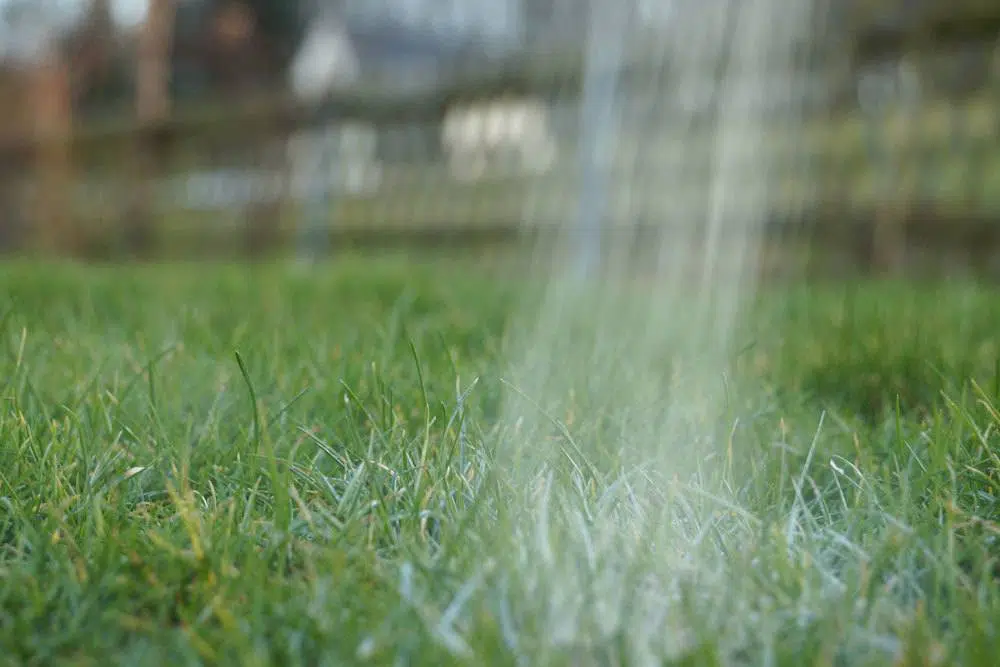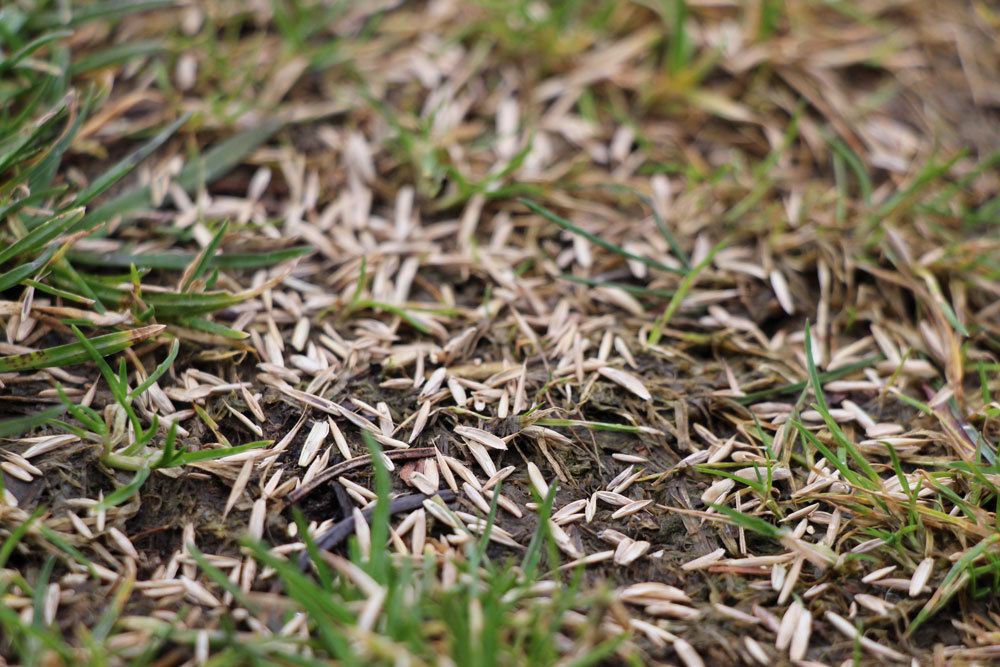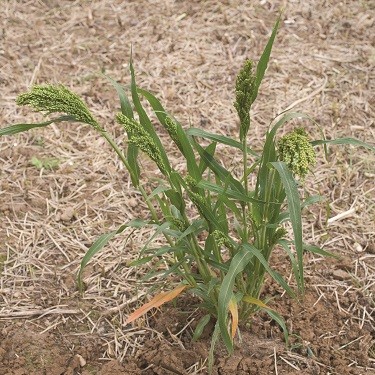Especially after hot periods millet often spreads in the lawn and causes problems there. Newly established and still patchy lawns provide ideal breeding grounds for the various species of millet. As a result, its mass appearance can not only hinder the growth of the young grasses in the lawn, but almost completely displace them. How to properly combat finger millet, we have summarized for you in this article.
Contents
- 1 Millet
- 2 Appearance and occurrence
- 3 Propagation
- 4 Manual control
- 5 Shallow scarifying
- 6 Form dense turf
- 7 Fertilizing and mowing
- 8 Liming
- 9 Chemical control
- 10 Pre-emergence control
- 11 Post-emergence control
- 12 Biological control of weed millet
- 13 Prevent
- 14 Laying new lawn
- 15 Extreme infestation
- 16 Re-seed
- 17 Author
Millet
Millet, a small spelt cereal, is one of the oldest cereals we know. It belongs to the sweet grass family and probably originated in Asia. Many species of the annual, herbaceous plant are used as food for their grains. The feral millet species commonly referred to as weeds are viewed in a somewhat more nuanced way from a botanical perspective. However, whether species of Digitaria, Setaria or even finger millet (Eleusine) are spreading in the lawn should interest few garden owners.
Appearance and occurrence
In the last 20 years, numerous millet species have been introduced to Central Europe or have also been introduced. Since then, they have spread explosively through birds, water, wind and contaminated seeds. Depending on the weather, millet germinates as early as the end of May. It can be easily distinguished from the usual lawn grasses by its light green, quite broad culms. As soon as finger millet develops side shoots, it forms larger clumps and thus displaces the lawn grasses. Unfortunately, the sweet grass tolerates a lawn cut very well. In this case, the millet simply forms short flower stalks below the lawn cutting height.
Propagation
As an annual plant, millet reproduces by seed. A single plant can produce several thousand seeds. The awkward part is that, unlike most other grasses, nearly every species of millet can also form its flower spikes flat above the ground – and thus below the height of the lawn mower’s cut. As the days get shorter and temperatures drop in the fall, the millet dies. Unfortunately, this does not solve the problem in the lawn by itself, because the numerous seeds remain germinable in the soil for decades after the mother plant dies. For the seeds to germinate, at least two conditions must be met.
- warm, dry weather with temperatures above 20 degrees Celsius
- the sunnier the location, the better
- open areas in the lawn
Manual control
If you discover sporadic millet in the lawn from the end of May, you should pull it out by hand or even prick it out as early as possible. Finger millet does not root particularly deep, so it is not difficult to remove it from the soil. Since the sweet grass is in a hurry to reproduce, the first seeds appear after only a few weeks. Their formation must be prevented at all costs. If you manage to stop the dispersal of seeds, in many cases you have already succeeded and the next year you will have peace from the annoying herb.
Other environmentally friendly measures
To control crabgrass in the lawn, the following measures have proven effective.
Shallow scarifying
An effective way to control sweetgrass is to dethatch the lawn flat. This involves adjusting the machine so that the blades do not touch the ground. Instead, the stalks of the sweetgrass plants, which lie flat, are lifted and can then be captured by the lawn mower, which should be set very flat. This action is far less strenuous than weeding each plant by hand. It is best to scarify the lawn already in the fall. This allows a denser lawn cover to form the following spring.
- start mowing already in March (from 10 degrees).
- if temperatures rise above 20 degrees for a longer period of time: scarify
- depending on the weather, for the first time from the end of May
- Scarify the area twice
- once lengthwise
- once crosswise
- then mow flat
- repeat the process in autumn

Form dense turf
Finger millet spreads mainly in patchy, thin lawns. Therefore, it is effective for its control if the lawn is always kept nice and dense by reseeding. If the turf has closed sufficiently by the following year, the unwanted sweetgrass can hardly develop.
Fertilizing and mowing
If the lawn is fertilized, the otherwise rather flat growing millet straightens up. This makes it easier to grasp with a low-set lawn mower. In addition, fertilizing also strengthens the lawn grasses so that they grow more vigorously and densely.
- Time: May to August
- best directly after scarifying
- in spring fertilize with Lawn Soil Activator
- use potassium-rich fertilizer in the fall
- cut short frequently
- Water during drought
- Avoid waterlogging

Liming
Since the various species of millet prefer to thrive in soil that has an acidic pH, liming the lawn may be useful in controlling the invasive plant. To check what the pH of the garden soil is, simple tests are commercially available. If the result is below the ideal pH of 6 to 7, it is recommended to treat with algal lime, which can easily be used throughout the growing season.
Chemical control
Conventional lawn weed killers are only effective against dicotyledonous plants. However, since the various species of millet – just like the noble grasses – belong to the monocotyledonous plants, the means do not show success. Of course, it is possible to control weed millet with chemical means. However, herbicides should always be used with caution in the home garden, as they pose a risk to humans and the environment that should not be underestimated. Therefore, be sure to follow the manufacturer’s instructions. There are two types of chemical control.
Pre-emergence control
- Time: end of April to beginning of May
- before germination
- Active substances stop the growth process
- available as granules or spray emulsion
- reapplication necessary in mid-June
- for new seedings wait at least until the 4th lawn cutting
Post-emergence control
- time: beginning of June until end of August
- in the 4th to 5th leaf stage
- usually apply as a spray emulsion
- after application it must not rain for a few hours
- is absorbed by the leaves
- possibly repeat the application after two weeks
Biological control of weed millet
A relatively new approach to controlling weed millet comes from the USA. There, too, the troublesome lawn weed is spreading rapidly. The use of cornstarch meal, which acts similarly to a herbicide, is recommended. The proteins in the corn starch prevent the formation of roots in the seedlings, thus causing the young millet plant to die. Whether this measure actually has the desired effect must be tested. In this country, there is a lack of empirical values in this regard.
- Clear lawn of leaves in advance
- apply corn starch with fertilizer wagons
- sprinkle on rainy days or alternatively water well
Prevent
Even weeds such as millet only thrive in good conditions. To grow, it needs light, space and, above all, warmth. A densely grown turf makes it difficult for millet to establish itself. Therefore, fill in bare spots with new grass seed and provide the lawn with sufficient water and nutrients.
Laying new lawn
Those who establish a new lawn, should do it in the fall, to create from the very beginning unfavorable conditions for the spread of various species of millet. At this time of year it is too cool, so it can not germinate. Then, early in the spring, check whether there are patches where the lawn is poorly grown. In this case, reseed as soon as possible. It is best to fertilize immediately with a slow-release fertilizer. This also strengthens the weeds, but even more important is a dense turf.
Extreme infestation
Especially when establishing new lawns, finger millet may spread so much under unfavorable conditions that it overgrows almost the entire area. In this case, the following measures are recommended:
Re-seed
If the millet has spread over the entire lawn, the only solution is to remove the entire turf. In the fall, the lawn is then reseeded.

Turf
If all measures do not help, because there are already countless seeds in the soil, a rolled lawn is the last option to get rid of millet. A rolled lawn can also be laid in the summer. In this case, a beautiful, dense lawn is guaranteed right from the start.


